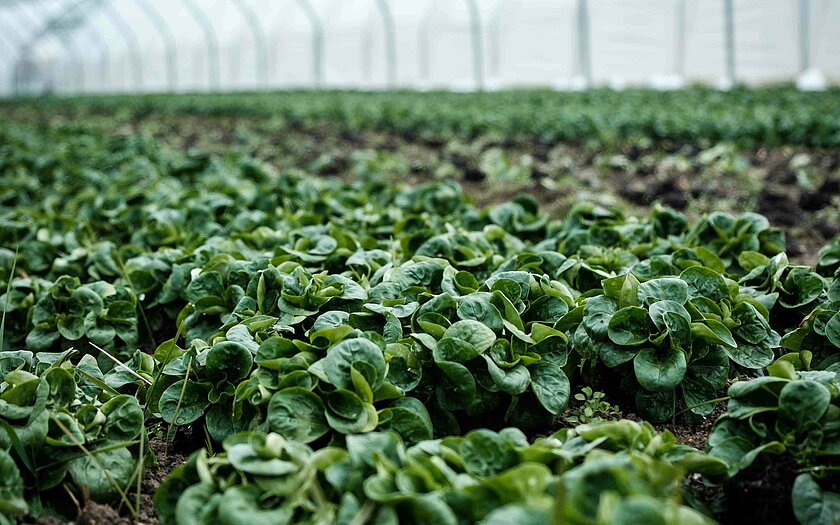Gerard & Anton Award winner MantiSpectra: Spectral sensing for the masses

Innovation Origins is putting the winners of the Gerard and Anton Awards 2023 in the spotlight. This edition: MantiSpectra.
We can all imagine how complicated it is to measure precisely how ripe a tomato is, whether the contents of a carton of milk are still good, and whether a medication’s composition is quite correct. This and much more is possible with MantiSpectra’s sensor chip. The result is a measuring device for all these purposes, simply in your smartphone. So, always in your pocket!
MantiSpectra was founded in late 2020 and is a spin-off of the Eindhoven University of Technology. The primary goal was to commercialize a spectral sensor chip for measuring material properties. The technology was already patented at that time.
“Our goal is to make spectral sensing available for the masses”
MantiSpectra’s Operations Director Kaylee Hakkel
“With our miniaturized sensing technology, we open up new applications where fast and accurate measurements are key. This is possible thanks to the use of integrated photonics. This technology allowed MantiSpectra to significantly reduce the size of material sensors while also slashing costs.”
Traditional devices can cost an average €50,000, while MantiSpectra believes it will eventually reduce the cost of a sensor to less than €10, enabling mass adoption in the consumer market. “For example, by incorporating material sensors into smartphone cameras. Lower costs will also facilitate the widespread incorporation of these sensors into robots, opening the door for smarter logistics and automated tasks – such as crop harvesting.”
MantiSpectra offers innovative sensing solutions for instant material analysis with a compact device. The company’s ChipSense technology has the same power as a near-infrared laboratory but condensed in a chip. This allows for a range of applications, such as: food & beverages, agriculture, smart logistics and drug analysis. Examples of these applications can be found at the bottom of this article.
The key unique characteristic of the ChipSense technology is that the sensor is very small and can be manufactured using standard semiconductor fabrication processes. This means that thousands of sensors can be manufactured on one wafer, and the cost of production will drastically scale down with high production volumes. This enables mass adoption in the consumer market. “We provide a full solution that allows our customers to build their own sensing application. In addition to the patented sensor chip, this includes the required electronics and optical components, as well as the acquisition software and a cloud-based solution for creating prediction models.”


TU/e and Brainport Eindhoven
As an internationally oriented company, MantiSpectra benefits from its location in the Brainport Eindhoven region. “We are a spin-off from the TU/e and receive full support from important parties in the region”, Hakkel says. “The Gate – the platform for tech start-ups in the first stage of their existence in the Brainport Eindhoven region – has been strongly supporting MantiSpectra in the first stages of the company. We are backed by photonics ecosystem creator PhotonDelta, which stimulates collaboration, provides funding, and connects markets.”
Although these circumstances have helped MantiSpectra grow, there is still something to be wished for. Hakkel: “To allow deep-tech startups to grow, it is required to have your own lab space or a location where your own equipment can be placed. These facilities specifically for start-ups are, unfortunately, quite rare. It would be great to have more possibilities regarding this point.”
As a winner in the ninth round of the Gerard & Anton Awards, MantiSpectra is part of an already strong tradition. Which of the eighty former winners stands out for Kaylee Hakkel? “Axelera AI, since they are bringing innovative AI-powered solutions to the market based on hardware in a domain dominated now by software solutions, anticipating a clear trend and innovating despite the challenges the companies face developing hardware and deep-tech products.”
Applications ChipSense Technology:

Food & Beverages
Food companies are constantly sending samples to laboratories for quality control. This takes a lot of time and quality control is often not performed until the end. ChipSense offers a solution to measure properties in seconds.

Agriculture
Farmers currently base their decisions (harvest time, fertilizers and pesticides) on a limited amount of data in open fields and greenhouses. With ChipSense, gardeners can monitor individual products even before harvest.

Smart Logistics
Fraud in foods such as honey, milk and olive oil is a common problem. A layer of spectral data provides transparency by extracting information directly from the material and not relying on labels.

Drug analysis
In the future, police officers can scan suspected drugs directly before sending them to validated laboratories. Consumers can double-check that their medication is correct.

